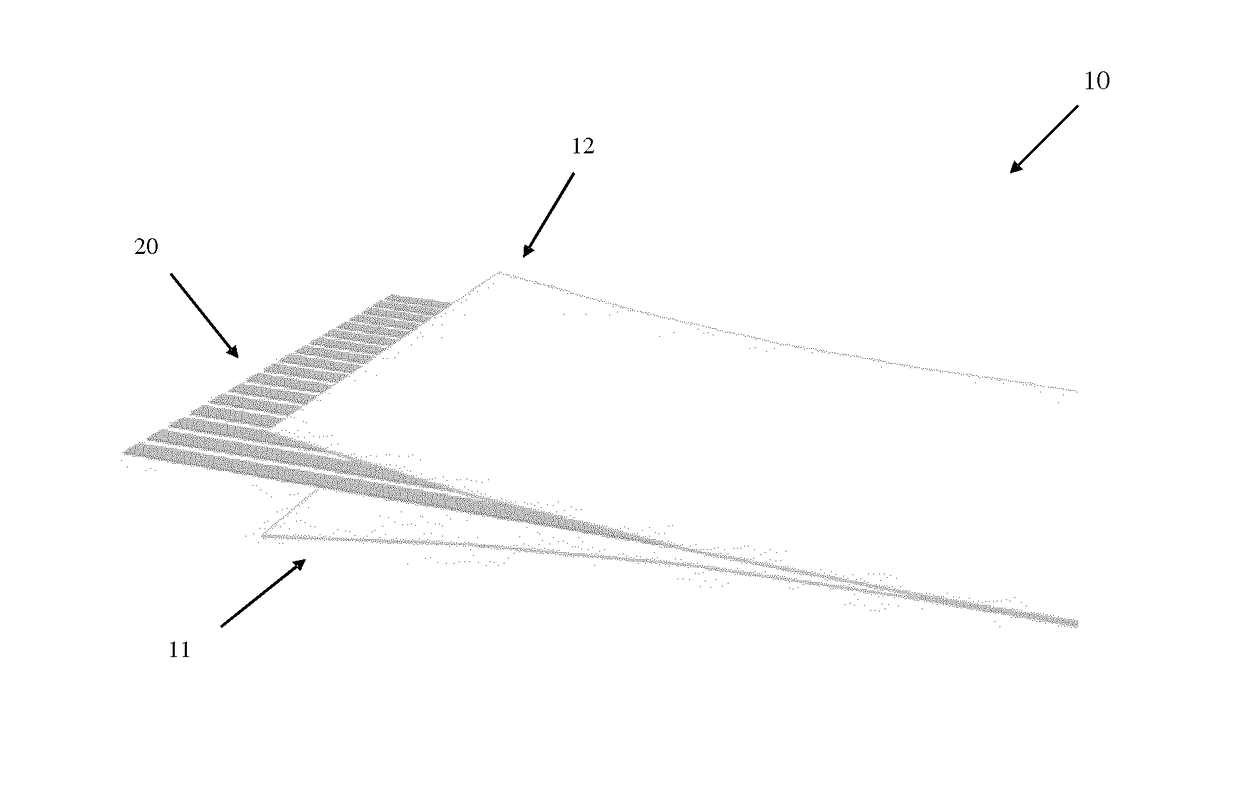Tiled display, and display tile and carrier substrate for use in same
a technology for display tiles and carrier substrates, applied in the field of displays, can solve the problems of cumbersome fastening means and support structures, still present challenges, large, thick and heavy, etc., and achieve the effect of substantial variation of pixel pitch and further improvement of the proposed tiled display system
- Summary
- Abstract
- Description
- Claims
- Application Information
AI Technical Summary
Benefits of technology
Problems solved by technology
Method used
Image
Examples
Embodiment Construction
[0071]FIGS. 2a and 2b show a flexible substrate 10 with electrically conducting tracks 20 according to an embodiment of the invention. Each one of the conducting tracks is meant to carry power, data or control signals to LED tiles. For instance, power is conducted through the GND and VSS tracks. The other tracks carry a DATA CLCK signal, DATA (or Video Signal) and COMMAND SIGNAL (the signals considered in e.g. U.S. Pat. No. 7,102,601 to control a tiled LED display; U.S. Pat. No. 7,102,601 is assigned to the present applicant, and its contents, including in particular the description of FIG. 2 therein, are incorporated herein by reference for the purpose of describing the cited signals). The tracks carrying DATA CLCK, DATA and COMMAND SIGNAL may be interrupted at regular intervals as will be discussed in more detail further below.
[0072]In a first preferred embodiment, the conducting tracks 20 are positioned between a first material layer 11 and a second material layer 12. The first a...
PUM
 Login to View More
Login to View More Abstract
Description
Claims
Application Information
 Login to View More
Login to View More - R&D
- Intellectual Property
- Life Sciences
- Materials
- Tech Scout
- Unparalleled Data Quality
- Higher Quality Content
- 60% Fewer Hallucinations
Browse by: Latest US Patents, China's latest patents, Technical Efficacy Thesaurus, Application Domain, Technology Topic, Popular Technical Reports.
© 2025 PatSnap. All rights reserved.Legal|Privacy policy|Modern Slavery Act Transparency Statement|Sitemap|About US| Contact US: help@patsnap.com



